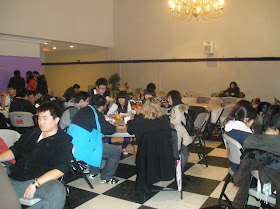My father read
The Magus a few summers ago. He tells me he slowly made his way through the first half and then finished the book in one night, unable to put it down. I was happy about this, since my father is an engineer and not the sort of person to read one of the twentieth century’s best pieces of literature. I’m sure he didn’t get out of it what I did, but he did make the comment "What was true in the book? Nothing." Exactly, dad.
John Fowles’ novels all deal with the problems of imagination and reality and their relation to freedom and responsibility. His characters use their existential freedom responsibly, to walk the fine line between the two and thus give up the metaphor, the unreal, for reality. I "borrow" many of Fowles’ ideas from time to time, not because I think he has the answers, but because I think he has the questions.
Indeed, in most of his work, he doesn’t give answers.
The French Lieutenant’s Woman actually has two endings. One explanation for the novel’s alternative endings is that they allow Fowles not to choose between the values of absolute individual freedom, the preservation of the self at whatever price, and the necessary social compromise entailed by that "true freedom" which lies between.
In
The Magus, a man named Conchis takes freedom to its biological or physical extreme, and in so doing makes the protagonist, Nicholas, experience the need for conventions that check both rampant freedom and the insidious penitential distortions of remorse. The godgame in
The Magus consists of a long series of masques, or lies, in which a final truth slowly becomes revealed. The truth that there is no truth. No limits.
Conchis uses Nicholas’s relationship with his ex-girlfriend, Alison, who Nicholas gives up for the "mystery" of the godgame, as the objective correlative to his lesson. Nicholas’s earlier treatment of Alison becomes a metaphor for this fine line between freedom of the self and the responsibility to not use that freedom to hurt others.
The debate over the paradox between fiction and reality in Fowles’s work seems to be the central focus of scholarly work. Most critics agree that Nicholas Urfe must transcend his dependence on metaphor, on art, before he can appreciate ordinary life. The Unreal, mystery, God, art, all is shown to be contrary to the taking of responsible action within the freedom that Nicholas is given. Fowles writes in
The Aristos, "Freedom of will is the highest human good; and it is impossible to have both that freedom and an intervening divinity." Discounting his atheistic arguments, Fowles also says, "Since ‘God’ is unknowable, we cannot dam the spring of basic existential mystery."
In the absence of a god, freedom’s ‘fine line’ is where Fowles locates morality. This principle in
The Magus and later
The French Lieutenant’s Woman grounds them in the idea that "good" can possibly be accomplished and there is a definite human morality in this balance, and therefore a truth, even if there is no judgment. He writes in
The Aristos, "To accept one’s limited freedom, to accept one’s isolation, to accept this responsibility, to learn one’s particular powers, and then with them to humanize the whole: that is best for the situation."
Who knows if my father got any of this out of his summer reading? But he got something out of it, no doubt. Fowles’ writing is accessible to all, whether his philosophy is or not. All of Fowles’ novels, especially
The Magus, are on my list for anyone who wants a good read. Anyone who wants to be lied to, cheated, and deceived. Because only through realizing the lies will we have the freedom to really choose.


















